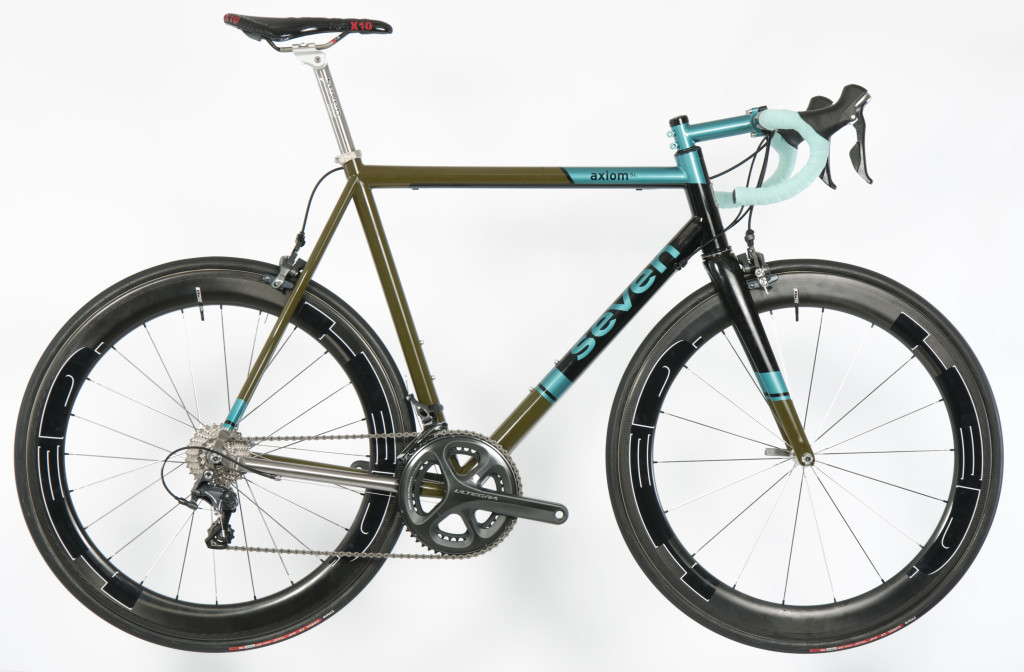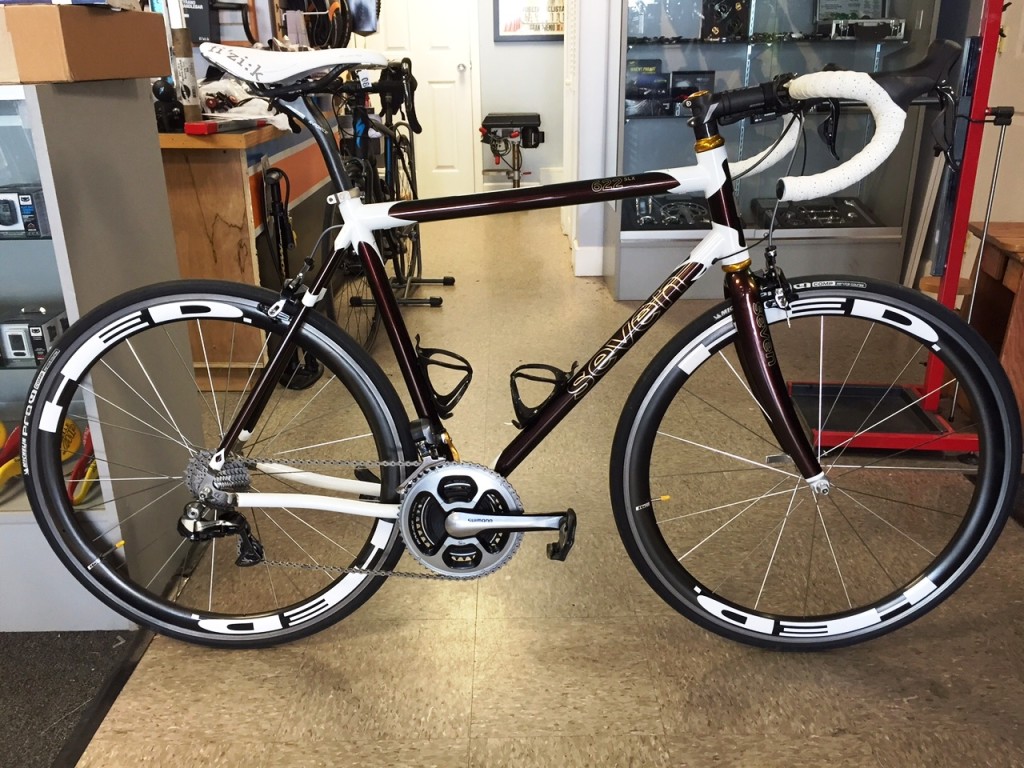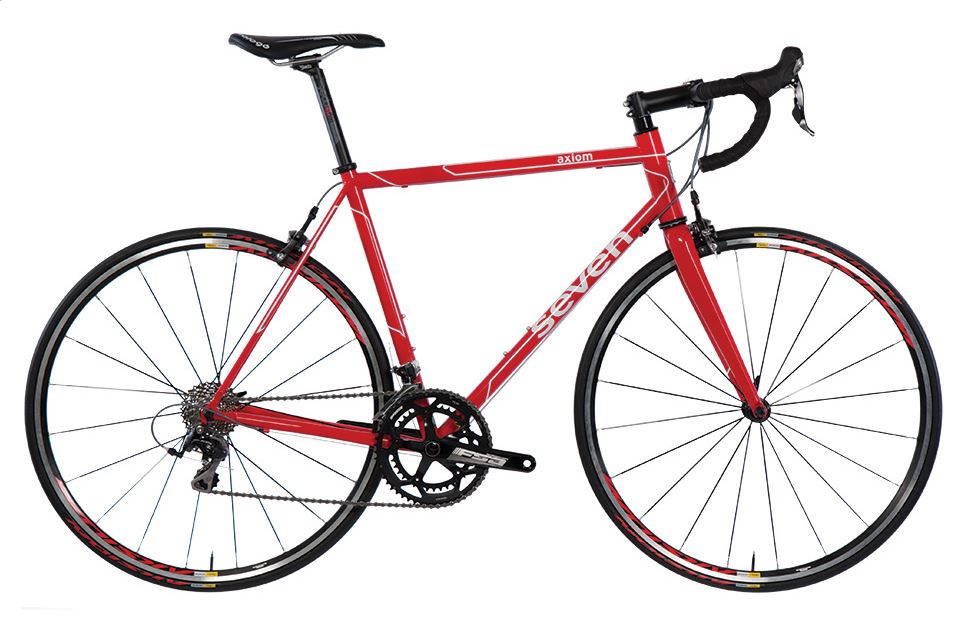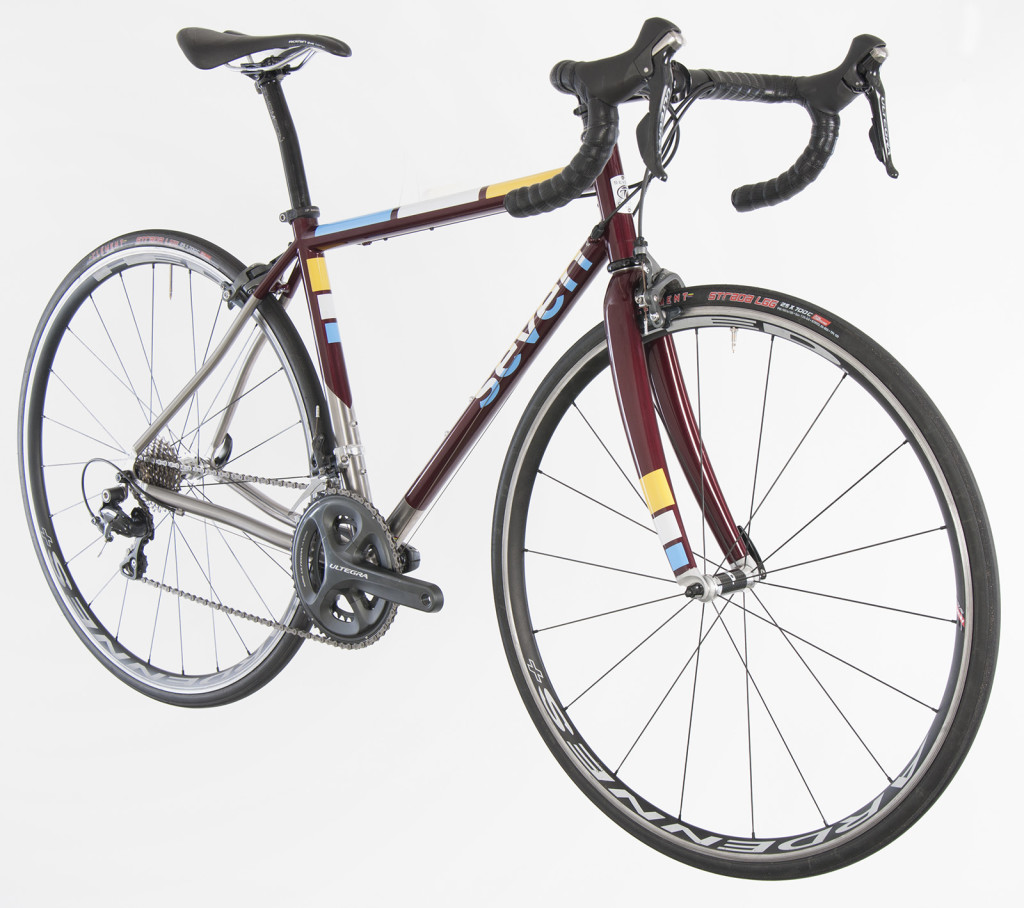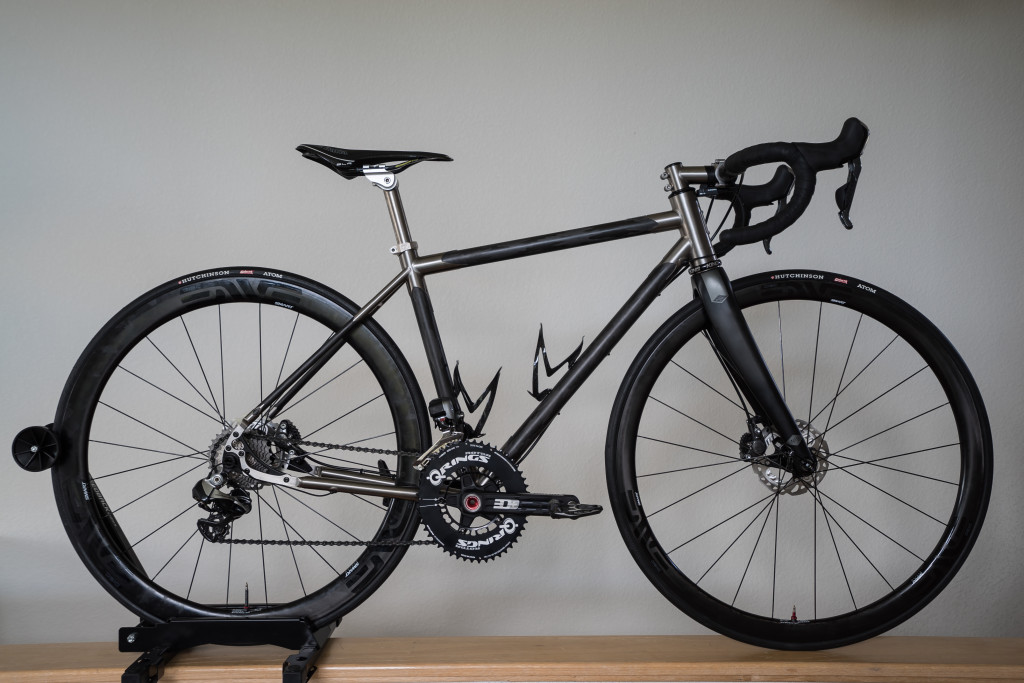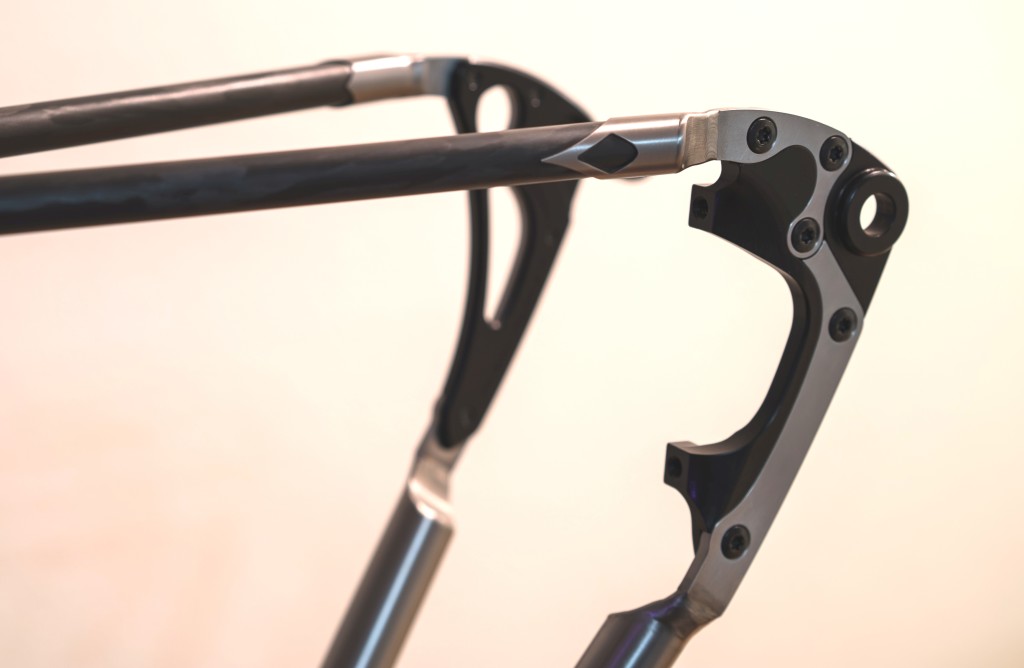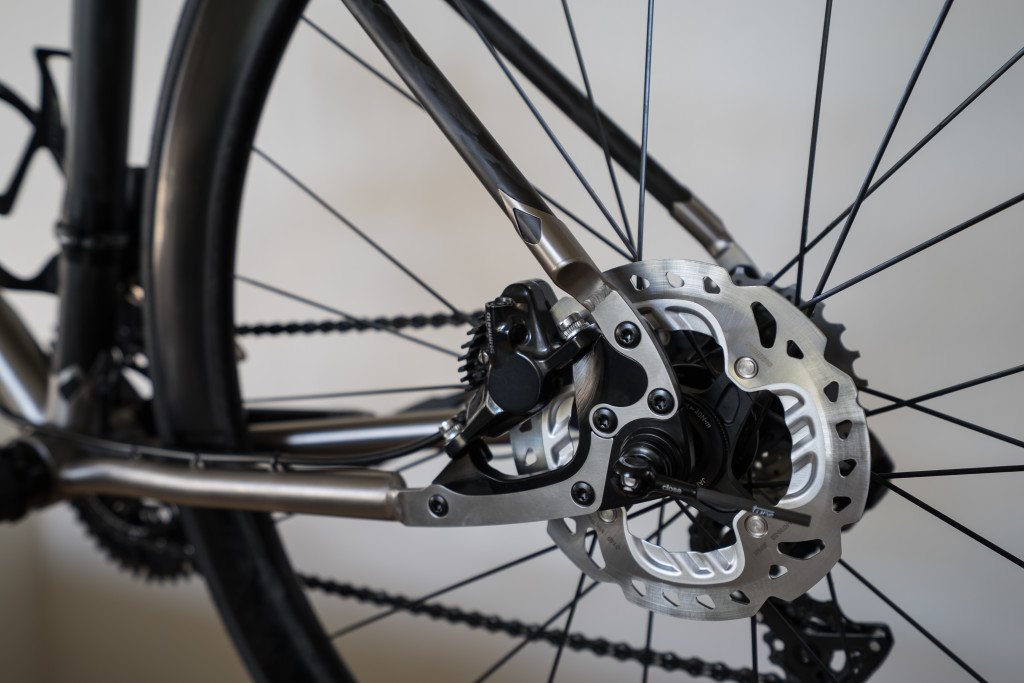The bike industry has traditionally worked backwards from race bikes to fill shop floors with race look-alikes for everyday riders who will never turn a crank in anger. What is good for the pros, so the logic goes, must be good for you, too, and for some very small number of non-pro riders, that could be true.
As with all our bikes, we start with the purpose of the bike and work forward. Going fast requires being able to sit in a comfortable, aerodynamic position, to be able to handle your bike in tight spaces, and to get good power transfer through the rear triangle.
As custom builders, getting to that perfect position is a given. We can replicate exact saddle and grip positions from a bike fitting. We can dial in handling by adjusting headtube angle and fork rake to produce the exact characteristics the rider wants. We can adjust the stiffness of the rear triangle by selecting specific diameter chainstays, up to and including the 1″ stays we call “race stays.”
Our 622 SLX rivals all of today’s carbon race machines for weight and stiffness, but it incorporates more road feel and better comfort than those bike through its unique combination of laser-cut titanium lugs and filament-wound carbon tubing. Our all-Ti Axioms make great criterium bikes for their ability to absorb the heavy impacts of racing on imperfect pavement and the way they come through the occasional crash.
The technology of race bikes evolves quickly, and adapting to new component standards can be a challenge, but with a custom bike these things can be considered during the design phase to leave you with as many upgrade options as possible.
The thing is, bikes aren’t fast. Riders are fast. The best way for the rider to Go Fast is to design a bike around them that fits them perfectly, handles the way they want it to and transfers as much of their power as possible.

